I am fairly new to VHDL and am following this tutorial to implement the following Mealy Finite State Machine:
and have written the following code in VHDL:
library ieee;
use ieee.std_logic_1164.all;
entity fsm is
port(clk, rst, in1 : in std_logic; o1 : out std_logic);
end fsm;
architecture mealy of fsm is
type state is (state1, state2);
signal current_state, next_state : state;
begin
comb: process(current_state, in1) begin
next_state <= current_state; -- default case
case current_state is
when state1 =>
o1 <= '0';
if in1 = '1' then
o1 <= '1';
next_state <= state2;
end if;
when state2 =>
o1 <= '1';
if in1 = '0' then
o1 <= '0';
next_state <= state1;
end if;
end case;
end process;
mem: process(clk, rst) begin
if rst = '1' then
current_state <= state1;
else
current_state <= next_state;
end if;
end process;
end mealy;
However on applying the following testbench:
library ieee;
use ieee.std_logic_1164.all;
entity fsm_tb is
end fsm_tb;
architecture sim of fsm_tb is
constant clockperiod : time := 10 ns; -- 100 Mhz clock
signal clk : std_logic := '0';
signal rst : std_logic;
signal in1, o_mealy : std_logic;
begin
uut_mealy : entity work.fsm(mealy) port map( clk => clk, rst => rst, in1 => in1, o1 => o_mealy);
clk <= not clk after clockperiod/2;
process begin
-- initial reset
in1 <= '0';
rst <= '1';
wait until rising_edge(clk);
-- take device out of reset
rst <= '0';
-- apply same inputs to both the devices
in1 <= '0'; wait for 23 ns;
in1 <= '1'; wait for 32 ns;
in1 <= '0'; wait for 7 ns;
in1 <= '1'; wait for 15 ns;
wait;
end process;
end sim;
the waveforms that I have obtained do not make sense to me:
As you can see the output o_mealy changes even without clock edge. It simply seems to only be following the input. By contrast, I have implemented the equivalent Moore machine and it seems to be working just fine:
If anyone can point out what I am doing wrong, it would be highly appreciated. Again, I have used this video for reference. I am using GHDL with GTKWave.




